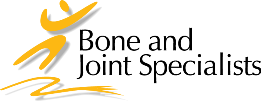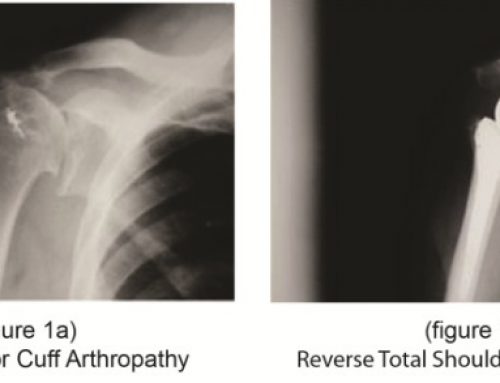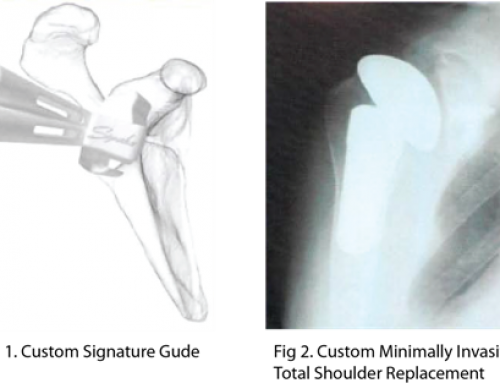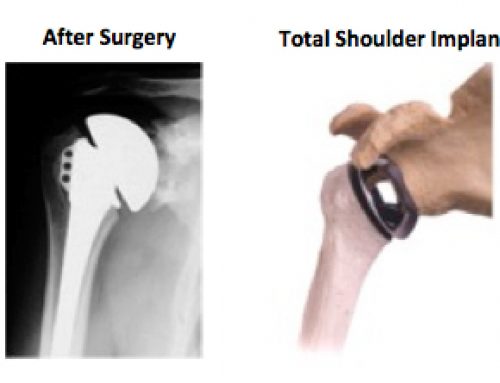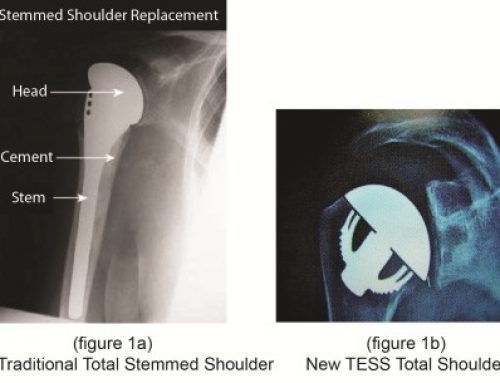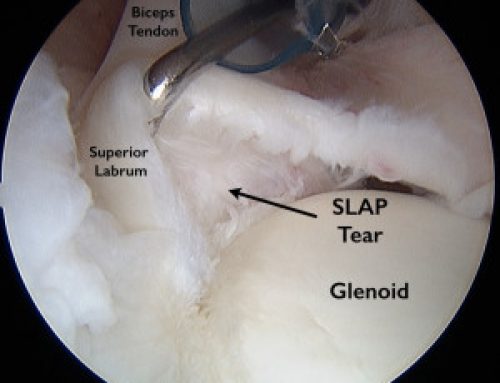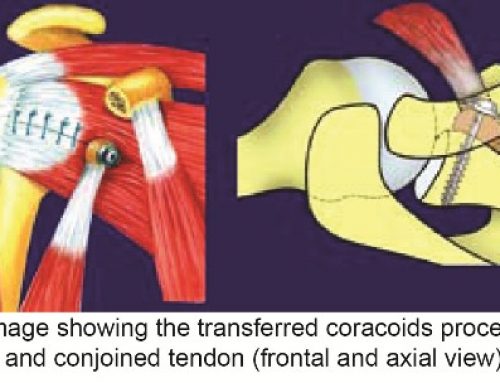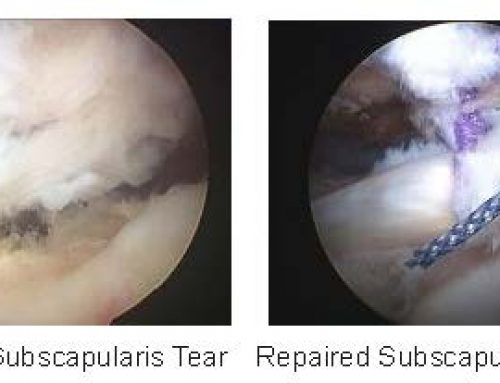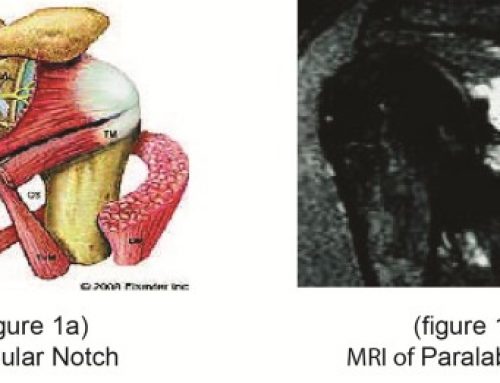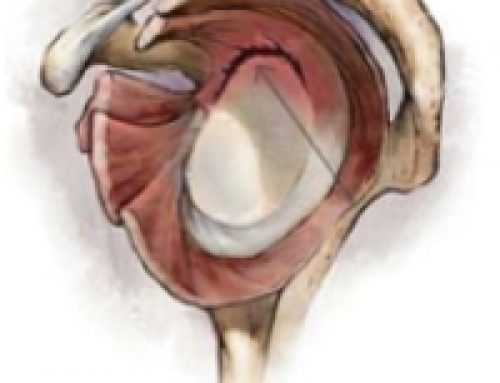Arthroscopic Rotator Cuff Repair including Subscapularis tear
by Dr. Richard Bartholomew
Rotator cuff injuries can be excruciating and are a common cause of limited shoulder function.
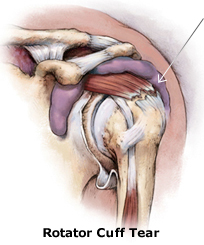 Torn Rotator Cuff Symptoms
Torn Rotator Cuff Symptoms
People with rotator cuff injuries or disorders often have pain or weakness when trying to play golf or tennis, throw a ball, fishing, work in the yard, or do any kind of overhead activity. You may have difficulty sleeping on your side because of pain at night, or you may have trouble reaching behind your back to reach your billfold or bra. The problem may start suddenly, after a fall, after reaching into the back seat of the car to get a heavy briefcase, or when trying to catch or lift a heavy object. Alternatively, it may come on gradually with repetitive overhead shoulder activities at work or play with no single obvious injury.
Rotator Cuff Injury
On the other hand, isolated high-grade subscapularis tears are a result of trauma. Most patients describe an event with an excessive external rotation of the shoulder or with resistance to forceful external rotation. Some patients hear a “pop” and others feel the shoulder “slipping out of place.” In older individuals, tears may be associated with shoulder dislocations. Presenting complaints include anterior shoulder pain and difficulty reaching behind the back or tucking in a shirttail. These complaints can be relatively nonspecific, and it is important to consider the multiple causes of anterior shoulder pain, including acromioclavicular joint arthrosis or dislocation, biceps tendon tears or inflammation, anterior capsulolabral damage, and fractures of the lesser tuberosity.
Rotator Cuff Shoulder Pain
The pain generated from the rotator cuff is usually felt on the front or side of the shoulder, but it can also be felt around the shoulder blade. Sometimes, the pain moves up into the neck or down the arm towards the elbow. Rarely does pain from the shoulder go past the elbow, but it can in some instances.
Arthroscopic Rotator Cuff Repair
During the rotator cuff tear surgery, your surgeon will use sutures to sew the torn muscle and tendon back down to the bone where it was initially attached. Those stitches hold the rotator cuff down to the bone for the next three months while the two grow and heal back together. It takes three months for that to happen, and that is why your activities will be quite limited during that same time span. Rotator cuff tears come in four different sizes, small, medium, large, and massive, based upon how many tendons of the four muscles are torn.
Small tears involve less than one of the four muscles. Usually, this is the supraspinatus, the muscle at the top of the rotator cuff, which sits just under the spur on the shoulder blade, and is usually the first muscle to tear. Partial tears are included in this category as well. Small rotator cuff tears can be fixed arthroscopically using 1 to 2 bone anchors and 2 to 4 stitches.
Rehabilitation For Shoulder Rotator Cuff Repair
Following repair, patients may be placed in a small abduction pillow and allowed external rotation to zero for the first six weeks. Following this initial post-operative period, physical therapy is initiated, and the range of motion is gradually increased. Strengthening exercises are not begun until a minimum of 10 weeks after surgery.
Dr. Bartholomew Performing an Arthroscopic Rotator Cuff Repair:
This procedure isn’t suitable for everyone who needs rotator cuff repair surgery. The best way to find out if you qualify for this procedure is to schedule a consultation with Dr. Bartholomew.
Call Bone and Joint Specialists at (248) 673-0500 serving the residents of Oakland and Oakland County, Southeast Michigan, Metro Detroit, Madison Heights, Warren, Wayne, Waterford Township, Rochester Hills, and Macomb, Michigan.
